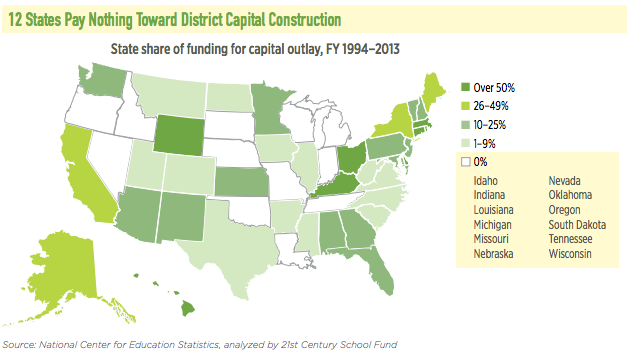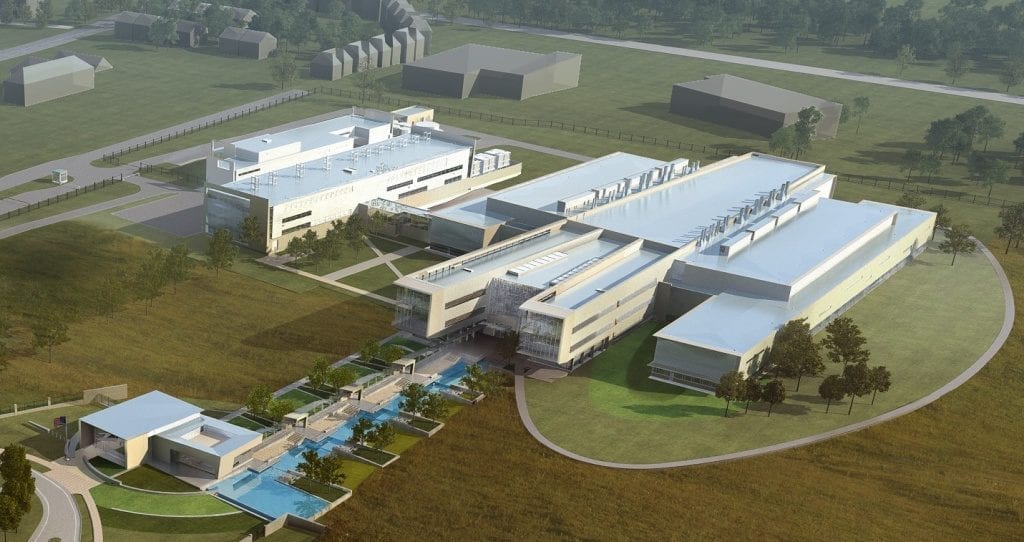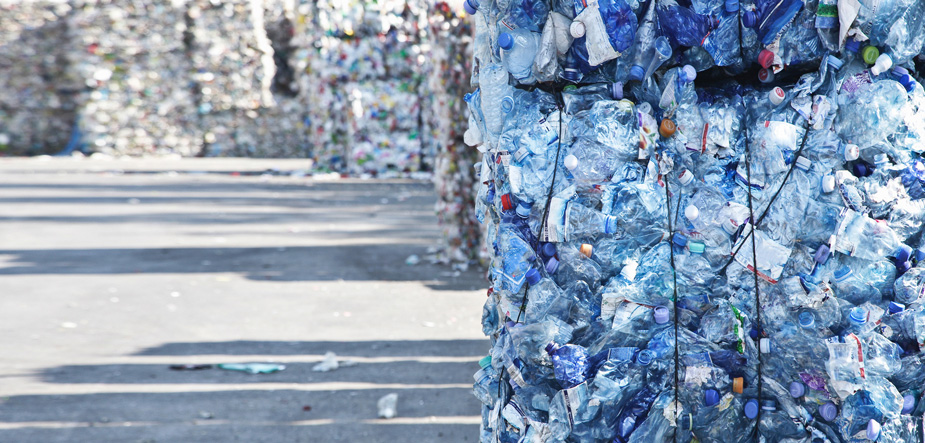Insight
Published and updated
Crumbling Infrastructure 3: Schools, Nukes, Food and Garbage
Welcome to the third and final installment of our series on America’s crumbling infrastructure. Only two of the sectors covered here—schools and solid waste—have grades in the American Society of Civil Engineers (ASCE) 2013 Report Card for America’s Infrastructure. The other two sectors—nuclear security and food and agriculture—are both critical infrastructure sectors overseen by the Department of Homeland Security.
I thought it might be difficult to find information on nuclear security since it concerns our weapons of mass destruction. But there’s more info than I expected, including a map of America’s nuclear facilities. As it turns out, it’s harder to get the 30,000-foot view of public education infrastructure than of nuclear security. The more sources of funding that exist, the harder it is to see the forest for the trees. Of these four sectors, only nuclear security relies primarily on federal funding. The other three depend on private ownership, user fees, and state and local taxes.
Public Schools (ASCE Grade: D)

Why is it critical? The public school system ranks second only to highways in terms of sheer size. About 100,000 buildings totaling 7.5 billion square feet and covering 2 million acres of land host nearly 50 million students and 6 million adults during the school year. Unlike highways, however, public school infrastructure receives almost no federal funding. In addition to being learning centers, public school infrastructure also protects communities during natural disasters.
What are the signs of crumbling infrastructure? One report estimates an annual funding gap of $46 billion to maintain current facilities (the average public school main building is 44 years old) and build new ones. Because local communities are responsible for 82 percent of public school capital costs, income inequality from community to community is widening the funding gap. This in turn widens the knowledge gap; recent studies show that a “building’s structural facilities profoundly influence learning. Inadequate lighting, noise, low air quality, and deficient heating in the classroom are significantly related to worse student achievement.” So not only are schools in poorer communities already in the worst shape, they are also the least likely to raise the funding needed to repair and modernize their crumbling infrastructure.
What’s being done to repair it? It’s hard to tell. The last time the U.S. Government Accountability Office took a comprehensive look at public school infrastructure, Hillary’s husband was in his second term (1996). On the federal front, the most help schools have received was when the FCC changed the E-rate program to help schools cover the costs of Wi-Fi. Beyond that, you have to look at individual states and communities. There are success stories, but they’re largely thanks to local initiatives.
Nuclear Security (No ASCE Grade)

Why is it critical? With an average age of 27 years, we haven’t produced any new warheads in a generation. Depending on the source, the U.S. maintains an arsenal of 4,800 to 7,200 nuclear weapons. We spend billions every year to secure them from accidental launch or detonation and cyber attacks, which could result in widespread destruction.
What are the signs of crumbling infrastructure? According to Eric Schlosser in his book Command and Control, it’s something of a miracle that we haven’t already experienced a nuclear catastrophe. Mother Jones summarized several incidents that might make it tough to sleep after you read about them. For example, in 2007, six nuclear missiles were accidentally loaded onto a plane and flown across the country. In 2012, an 84-year-old nun, Sister Megan Rice, broke into a weapons-grade uranium facility. Outdated equipment, systems and facilities make it difficult for “missileers” and other staff to oversee the nation’s nuclear stockpile.
What’s being done to repair it? In 2017, the Department of Energy is budgeting $12.9 billion for the National Nuclear Security Administration to maintain nuclear security. Over the next 30 years, we’ll spend $1 trillion to ‘modernize’ our nuclear arsenal. That budget includes more than just maintaining and protecting existing weapons, since we don’t create any new warheads. Instead, we adapt new weapons from older weapons. The new B62 Model 12 is a smaller, more accurate atom bomb that is recycled from an old warhead.
Nukes aren’t going away. As other countries continue to develop nuclear weapons capabilities, the U.S. nuclear weapons complex is working to make major upgrades to stay in the game.
Food & Agriculture (No ASCE Grade)

Why is it critical? Food and agriculture infrastructure is primarily supported by private ownership, much like communications critical infrastructure mentioned in part two of this series). It is highly dependent on other critical infrastructure sectors, including water and wastewater systems, transportation, energy, and chemical sectors. According to the National Association of State Departments of Agriculture, the food and agriculture sector is critical because it accounts for:
- $1 trillion of food and fiber business
- $60 billion in annual exports
- 15% of total U.S. economic activity
- 18% of U.S. jobs
What are the signs of crumbling infrastructure? Food and agriculture infrastructure feels the pain of the critical infrastructure sectors it relies on for shipping, irrigating, producing and fertilizing crops. It’s also dealing with an aging workforce, an ongoing battle about Genetically Modified Organisms (GMOs), and the Food Safety Modernization Act, which exists, in part, to protect our food supply from acts of agroterrorism and other threats intended to harm the public.
The food chain—from farm to processing to distribution—is vulnerable to attack. It likely wouldn’t be a headline-grabbing scenario, at least not at first. Instead, threats would come in the form of toxins and bacteria disseminated in fruit and vegetables, or as viral attacks against livestock.
What’s being done to repair it? Protecting the food supply from attack started with Homeland Security Presidential Directive 9 in 2004. To meet its requirements to defend agriculture and food, the DHS is building the National Bio and Agro-Defense Facility (NBAF) in Manhattan, Kansas. Operations will begin in 2022. Until then, the 50s-era research center where Hannibal Lecter was set to be imprisoned is in charge of protecting our cows from foot-and-mouth disease.
Solid Waste (ASCE Grade: B-)

Why is it critical? Each person in the U.S. generates about 4.4 pounds of garbage per day, according to the EPA. That works out to 254 million tons of trash generated in 2013; enough to fill the Superdome nearly 500 times. In 1937, the first municipal solid waste landfill (MSWLF) opened in Fresno, California. Today there are more than 1,900 MSWLFs around the country that receive a majority of our garbage.
What are the signs of crumbling infrastructure? At a B-, solid waste goes to the head of the ASCE class. Nevertheless, the garbage picture isn’t completely rosy. While the number of landfills has decreased in recent years, the average size of each landfill has increased. We’re throwing away more electronics, which contain valuable resources as well as toxic materials. After fossil fuels and livestock, landfills emit the most methane, which, as a greenhouse gas, isn’t doing the environment any favors. Decaying garbage creates a toxic substance called leachate, which has to be properly captured and treated to avoid soil and ground water contamination.
What’s being done to repair it? Of the 254 million tons of waste generated in 2013, only 134.3 million tons (52.8 percent) ended up in landfills. We recycle 34 percent of material now compared to 10 percent in 1980. Recent “waste-to-energy” programs produced 2,720 megawatts of electricity in 2010. There are many requirements involved with closing a landfill. However, after landfills are shut down, the land gets repurposed for some surprising uses. The John F. Kennedy Library and Museum is located on an old landfill overlooking Boston, and the Bayonne Golf Club sits on an old landfill in New Jersey.
Garbage is the High Note
So, there you have it. Thanks to solid waste, we end our 3-part series on America’s crumbling infrastructure with some promise.
There are multiple opportunities for infrastructure repair and development projects. The Center on Budget and Policy Priorities cites the many economic benefits of investing in public infrastructure, including job creation, increased productivity, and improved quality of life. There is no quick fix for any infrastructure sector. They’re all behemoths, but there’s no getting by without them.